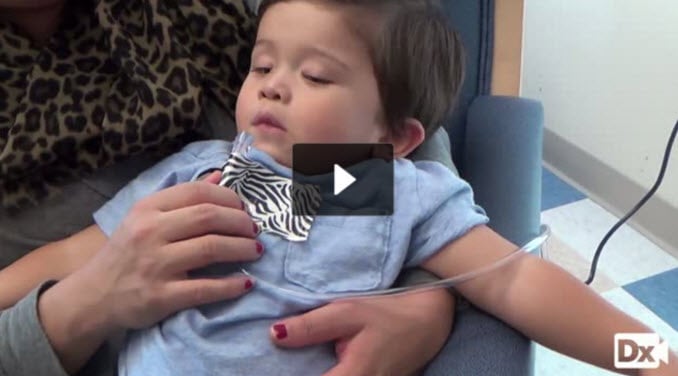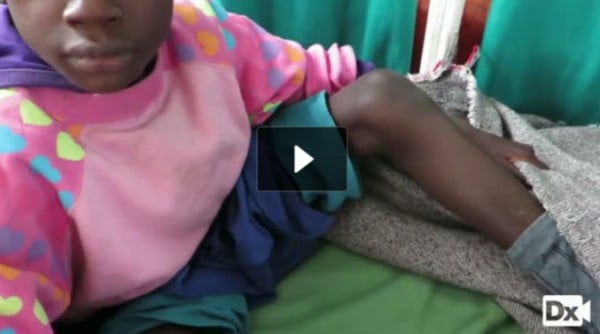The NCCPA™ PANCE Pulmonary Content Blueprint covers nine topics under the label infectious disorders, including four types of pneumonia.
| Condition | Summary | Key Differentiators |
|---|---|---|
| Acute Bronchiolitis | Inflammation of small airways in the lungs, typically affects children under 2, caused by RSV, may present with wheezing. | Children, RSV, wheezing, treatment is oxygen. |
| Acute Bronchitis | Inflammation of larger airways in the lungs, can affect people of all ages, caused by viruses or bacteria, may present with cough but not wheezing. | All ages, viruses or bacteria, cough, normal vital signs, no rales, no egophony. |
| Acute Epiglottitis | Life-threatening inflammation of epiglottis, caused by H. influenzae type B, presents with stridor. | Life-threatening, H. influenzae type B, tripod positioning ⇒ 3 Ds of epiglottitis: dysphagia, drooling, and (respiratory) distress, thumbprint sign on x-ray lateral neck film. |
| Croup | Upper airway infection that leads to swelling around vocal cords, typically affects children between 6 months and 3 years old, caused by parainfluenza virus, presents with "barking" cough and stridor. | Children, parainfluenza virus, "barking" cough, and stridor, steeple sign on PA CXR (narrowing trachea in the subglottic region) |
| Influenza | Contagious viral infection that affects the nose, throat, and lungs, can cause severe disease in certain populations, seasonal, rapid onset. | Seasonal, rapid onset, severe disease, vaccinate all persons aged ≥6 months, antivirals ⇒ ideally< 48 hours |
| Pertussis (Whooping Cough) | A highly contagious bacterial infection that causes severe coughing spells, caused by B. pertussis, can affect people of all ages, characterized by "whooping" cough. | Gram-negative bacteria Bordetella pertussis, "whooping" cough, all ages, treat with macrolide (erythromycin/azithromycin) |
| Pneumonia | Infection of the lungs that can cause inflammation, fluid buildup, and damage to lung tissue. Can affect people of all ages, most common in infants, young children, and older adults. Symptoms include fever, cough, shortness of breath, and chest pain. | All ages, most common in infants, young children, and older adults, fever, cough, shortness of breath, chest pain. |
| RSV (Respiratory Syncytial Virus) | Common virus that causes infections of the lungs and respiratory tract, most common cause of bronchiolitis in children, affects infants, young children, and older adults. | Most common cause of bronchiolitis in children, infants, young children, older adults. Diagnosed with nasal washing. |
| Tuberculosis | Potentially serious infectious disease caused by Mycobacterium tuberculosis, can affect other parts of the body, can be latent or active. | Potentially serious, other parts of the body, latent or active, PPD rules. |
| Acute bronchiolitis (ReelDx) | ReelDx Rotation Room (bronchiolitis)Patient will present as → a 9-month-old infant presents with a three-day history of a mild respiratory tract infection with serous nasal discharge, fever of 38.5 C (101.4 F), and decreased appetite. Physical exam reveals a tachypneic infant with audible wheezing and a respiratory rate of 65. Flaring of the alae nasi, use of accessory muscles, and subcostal and intercostal retractions are noted. Expiratory wheezes are present. Most often caused by RSV - commonly in the fall and winter months
DX: Nasal washing for RSV culture and antigen assay; CXR = normal Treatment:
|
||||||||||||||||||||||||||||||||||||
| Acute bronchitis (ReelDx) | Patient will present as → a 23-year-old female with a one-week history of cough productive of whitish sputum. This was preceded one week prior by a URI. She denies chills, night sweats, shortness of breath, or wheezing. Temperature is 99.9°F (37.7°C). Acute bronchitis is defined by a cough >5 days; can last 1-3 weeks Organisms:
Presentation:
DX: Obtain CXR if the diagnosis is uncertain or symptoms persist despite conservative treatment TX: symptomatic and supportive - hydration, expectorant, analgesic, B2 agonist, cough suppressant
|
||||||||||||||||||||||||||||||||||||
| Acute epiglottitis | Patient will present as → a 3-year-old boy who is brought to the ER with a sudden onset of fever (104.0 F), respiratory distress, and stridor. On examination, the boy appears acutely ill. He is sitting, leaning forward with his mouth open. He has a muffled voice and is drooling. When asked, the parents report, “We don’t believe in vaccinations.” Supraglottic inflammation and obstruction of the airway due to infection with Haemophilus influenzae type B (Hib)
Tripod positioning ⇒ 3 Ds of epiglottitis:
DX: lateral neck X-ray, which will classically show a thumbprint sign from swelling of the epiglottis. Secure airway, then culture for H.flu
TX: Treatment involves intubating if necessary, supportive care, and ceftriaxone. May be treated as an outpatient if stable |
||||||||||||||||||||||||||||||||||||
| Croup (ReelDx) | Patient will present as → a 2-year-old boy who is brought to you by his father, who is concerned about a “barking cough,” mild fever, and a hoarse voice. He reports that he had a runny nose last week that has since resolved. Physical exam reveals inspiratory stridor. AP neck film is shown here. Croup refers to an infection of the upper airway, which obstructs breathing and causes a characteristic barking cough
Treatment:
|
||||||||||||||||||||||||||||||||||||
| Influenza (ReelDx) | Patient will present as → a 5-year-old with sudden onset of fever, chills, malaise, sore throat, headache, and coryza. The child is also complaining of myalgia, especially in her back and legs. On physical exam, the patient appears lethargic, has a temperature of 102.5 F, and palpable cervical lymph nodes. Breath sounds are distant with faint end-expiratory wheezes. Influenza is a viral respiratory infection caused by orthomyxovirus resulting in fever, coryza, cough, headache, and malaise
Vaccination
Dx: rapid antigen test in the clinic, rapid serology test more accurate
Treatment is symptomatic (for most) or with antivirals ⇒ ideally< 48 hours – Tamiflu (oseltamivir), inhaled Relenza (zanamivir), IV Rapivab (peramivir), and oral baloxavir (Xofluza)
|
||||||||||||||||||||||||||||||||||||
| Pertussis (Whooping Cough) | Patient will present as → a 4-year-old boy with a severe cough following one week of cold symptoms, including sneezing, conjunctivitis, and nocturnal cough. He presents with paroxysms of cough followed by deep inspiration and occasional post-tussive emesis. Whooping cough (pertussis) is a highly contagious respiratory tract infection marked by a severe hacking cough followed by a high-pitched intake of breath that sounds like a whoop.
Diagnosed by a nasopharyngeal swab of nasopharyngeal secretions – culture Tx: macrolide (erythromycin/azithromycin); supportive care with steroids / beta2 agonists |
||||||||||||||||||||||||||||||||||||
| Pneumonia (PEARLS) |
Presentation: Tachycardia, tachypnea, dyspnea, febrile, age 65+ Physical exam: Egophony, fremitus, rales Chest radiograph: Infiltrates and or consolidation Treatment: Community-Acquired
Hospital-Acquired (HAC): Vancomycin + Piperacillin/Tazobactam AIDs patients receive Bactrim prophylaxis against PJP pneumonia
CURB-65 Score for Pneumonia Severity
|
||||||||||||||||||||||||||||||||||||
| Respiratory syncytial virus infection (ReelDX) | Patient will present as → a 5-month-old infant with a three-day history of a mild respiratory tract infection with serous nasal discharge, fever of 38.5 C, and decreased appetite. Physical exam reveals a tachypneic infant with audible wheezing and a respiratory rate of 65. Nasal flaring, use of accessory muscles, subcostal and intercostal retractions are noted. Expiratory wheezes and cough are present. MC cause of lower respiratory tract infection in children worldwide – virtually all get it by age 3; the leading cause of pneumonia and bronchiolitis
Tx: Indications for hospitalization ⇒ tachypnea with feeding difficulties, visible retractions, oxygen desaturation < 95-96%
Vaccination (view current CDC guidelines)
Infants and young children
Prophylaxis: Palivizumab (Synagis) prophylaxis, FDA-approved for children at high risk for severe RSV disease
See Bronchiolitis |
||||||||||||||||||||||||||||||||||||
| Tuberculosis (ReelDx) | ReelDx Virtual Rounds (Tuberculosis)Patient will present as → 34-year-old female nurse presents with a worsening cough of six weeks’ duration together with weight loss, fatigue, night sweats, and fever. A recent HIV test was negative. A CT scan of the chest reveals a 3 cm lesion in the upper lobe of the left lung and calcification around the left lung hilus. A sputum smear was positive for acid-fast organisms. Tuberculosis (TB) is a disease caused by bacteria called Mycobacterium tuberculosis (acid-fast bacilli)
Screening with tuberculin skin test (TST) or interferon-gamma release assays IGRAs Mantoux Test Rules: The test is positive if induration
Diagnosis with sputum for AFB smears and Mycobacterium tuberculosis cultures – have to be 3 AFB negative
TX: If PPD/IGRA is POSITIVE, order a CXR
PPD positive or IGRA + CXR negative = latent TB ⇒ CDC recommends short-course, rifamycin-based, 3- or 4-month latent TB infection treatment regimens over 6- or 9-month isoniazid monotherapy
PPD positive or IGRA + CXR positive = active TB ⇒ Several treatment regimens are recommended in the United States for active TB disease. TB treatment can take 4, 6, or 9 months depending on the regimen.
All are hepatotoxic, so you need to get baseline labs
Monitor serum creatinine; take meds on an empty stomach since food can reduce absorption, watch for hepatotoxicity, be aware of drug interactions, especially with HIV meds |







